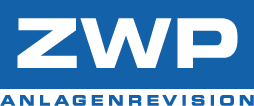|
ZWP Anlagenrevision GmbH • Südstraße 1 • 66701 Beckingen • Germany
corrosion measurement on a test track of up to 20m per direction
testing of wall bushings
tube exposure only for coupling the probes
testing of pipe bends
testing of pipe bridges
CORRfinderIn the chemical industry in particular, pipelines are subject to extreme conditions due to high pressures, high temperatures and the nature of the media. For this reason, maintaining these pipeline systems is a major, but also complicated task for the operator and the responsible maintenance department. In many cases, corrosive material erosion or cracks have to be identified and inspected in inaccessible areas. Defects, however, have to be located and evaluated at an early stage with the right effort and precision. This is important not only with regard to the availability of the systems concerned, but also in particular when it comes to minimizing liability for environmental damage as a result of leakages and in order to comply with legal operator obligations. What testing methods are currently being used?
When considering economic efficiency and effectiveness, however, these processes quickly reach their limits: For instance, when it comes to curved pipes of varying dimensions that have been fitted with flanges, branches or valves (e.g. armature casing on storage caverns), pig testing is out of the question. In addition to this, the amount of work required for pigging when carrying out a local inspection of the pipelines is in no way related to the associated costs. Limits of conventional testing methodsPipelines and pipeline sections that are not freely accessible are always particularly problematic:
A major disadvantage of all the testing methods mentioned except for the pigging inspection method is that they are only capable of measuring corrosive material erosion locally. This means that wall ducts have to be manually cut free, insulations have to be removed and soil has to be cleared away only then to use a conventional ultrasonic probe to locally inspect the pipe wall point by point to detect any unacceptable reduction in thickness resulting from corrosion or cracking. The results are then documented. Both casing spacers and pipelines on pipe bridges or in wall ducts can be inspected at random or not at all. To tackle this problem, we developed the CORRfinder test method. Once again, in cooperation with the scientists and engineers of the Fraunhofer Institute IZfP for Non-Destructive Testing in Saarbrücken, an ultrasonic testing system based on EMUS technology (electromagnetic ultrasound) was developed exclusively for us. Description of the test systemIn this method, a test probe consisting of one or more ultrasonic transmitters and receivers is attached to the pipe wall. Video CORRfinderIn this video you can see the modern CORRfinder testing method in action. It is particularly useful in places that cannot be reached from the outside using conventional testing methods. VideosCORRfinderService provision
Testing result and documentationSince this method delivers results that are fully reproducible, the corrosion rate can also be determined by comparing a repeat measurement with the previous measurement after some time. The finished scan is saved together with a digital image of the pipe to create a complete test report. In this context we are able to adapt the format of the documentation according to customer requirements. Advantages of the method
Other potential applications of the CORRfinder test systemDue to its long reach, the method is also ideally suited for testing high masts such as:
|
||
|
|


